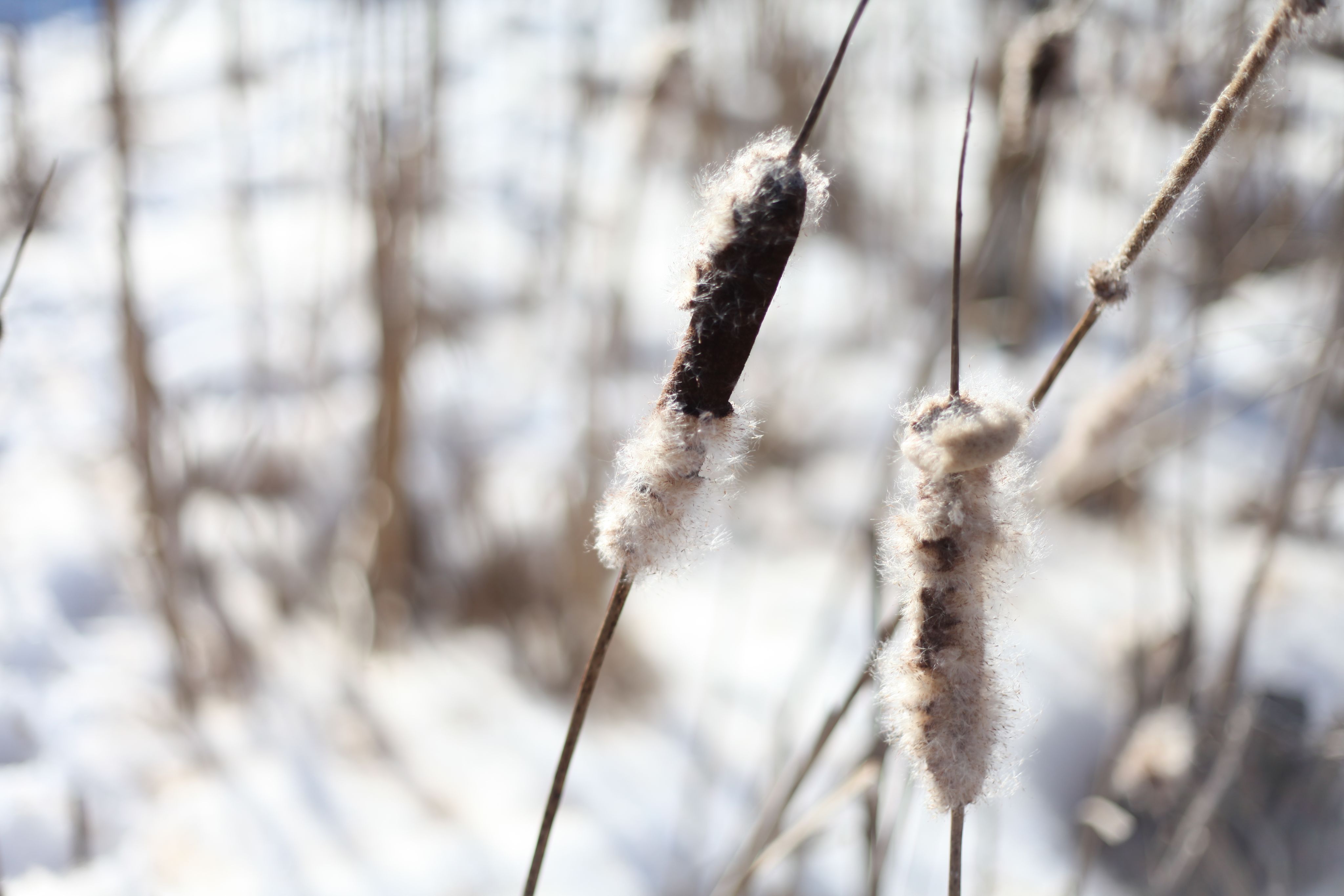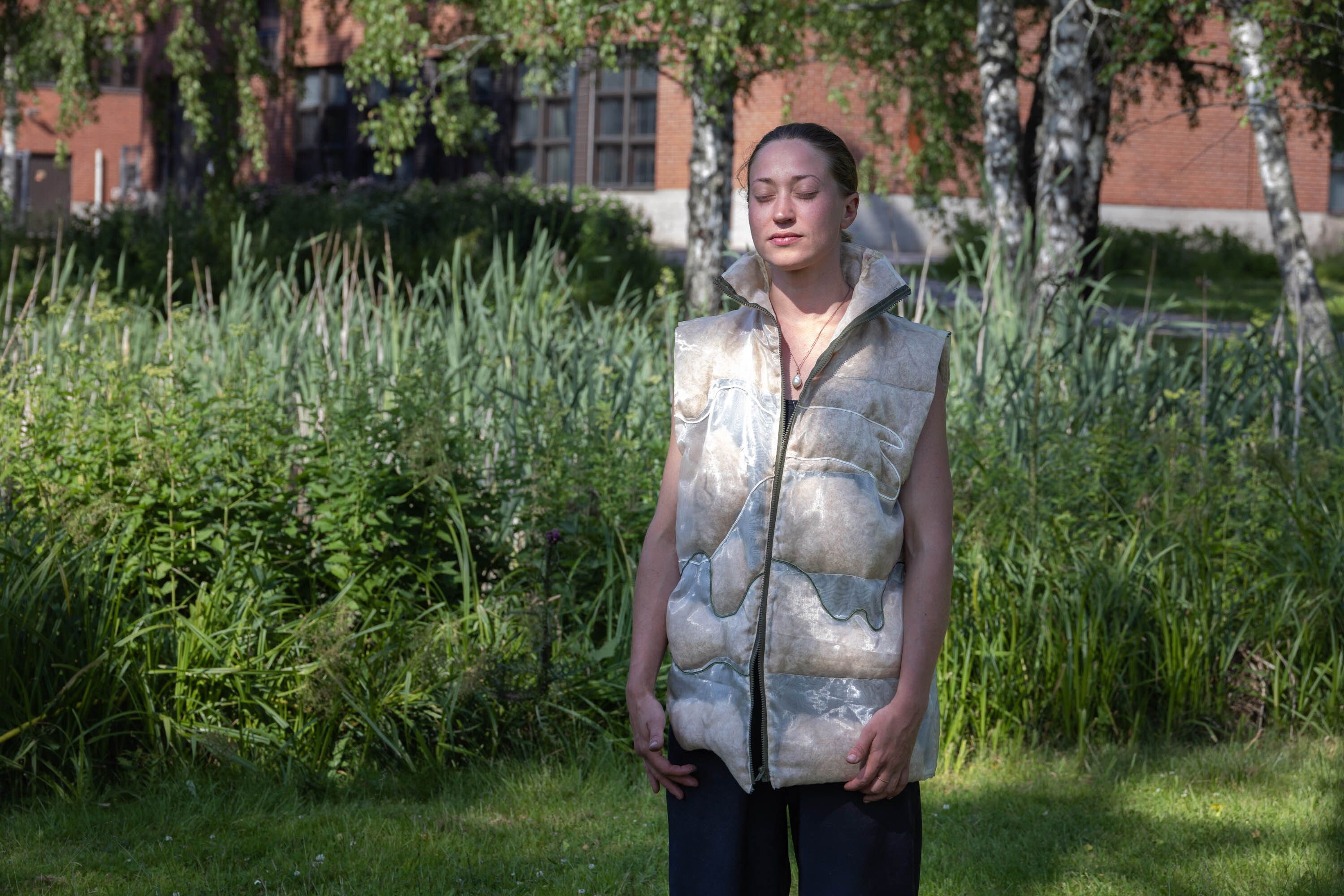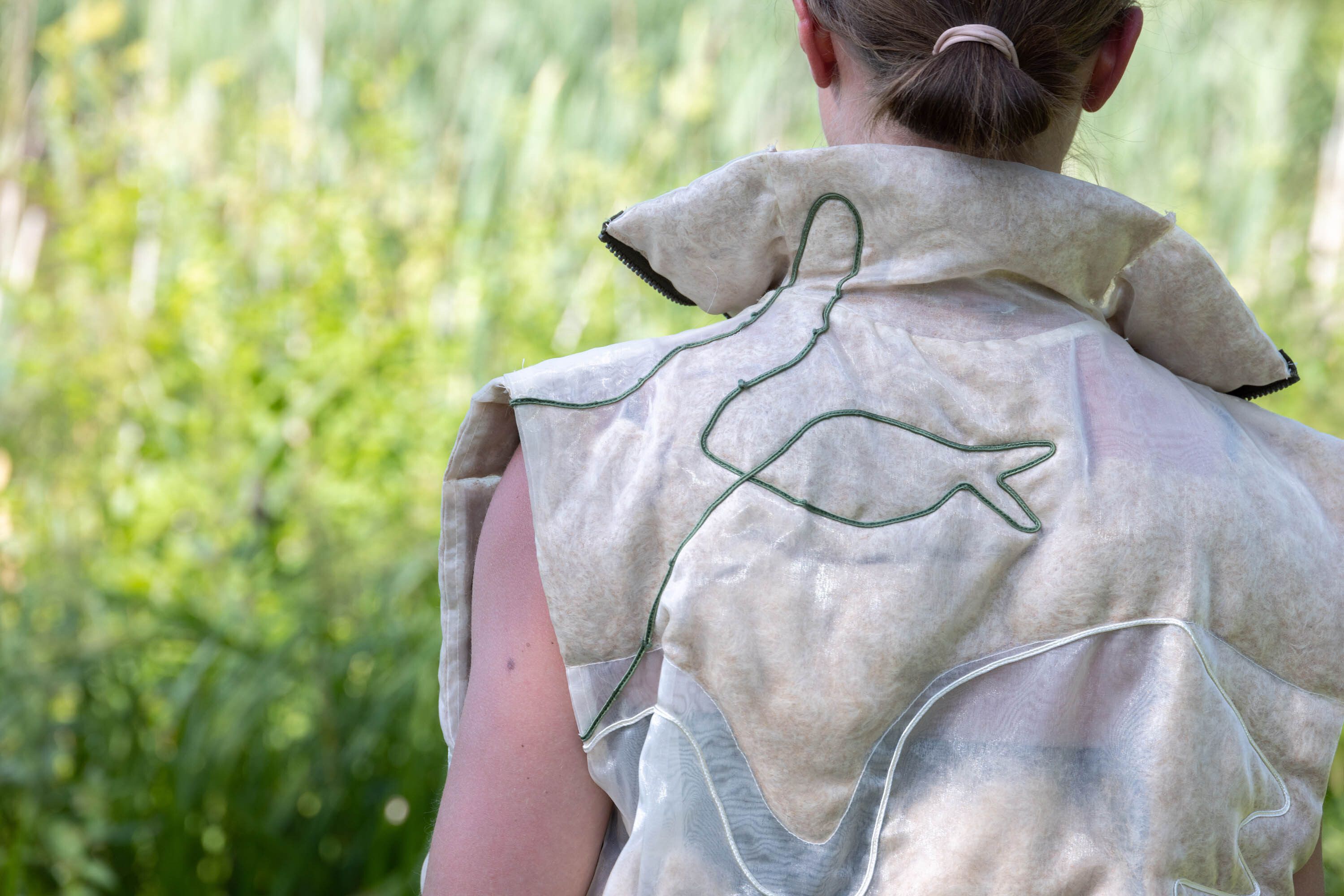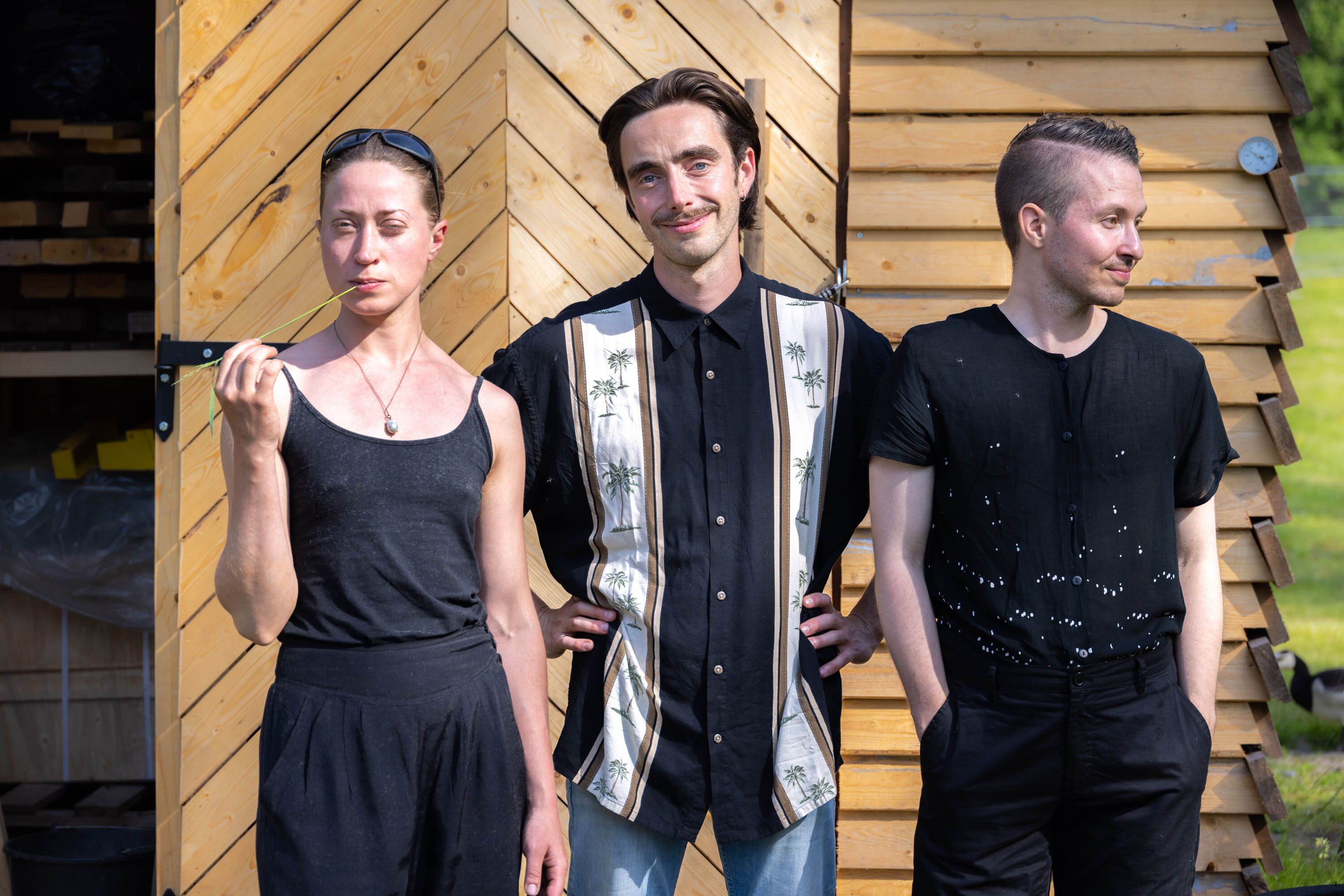An eco-filling to replace down
A hundred years ago, cattail fluff was used as life vest filling – now a Finnish company wants the eco-friendly material for pillows and winter coats. Restoring peat bogs for cattail cultivation would also significantly reduce Finland’s emissions, according to the company.

In a way, the story began a couple of years ago when Lukas Schuck was in the uncomfortable club room of a friend’s student housing. The house was next to the small Ossinlampi pond, around which cattails grow. One day, the two noticed how the cigar-like inflorescences sent clouds of seed fluff into the winter air.

Schuck had an idea.
‘We collected the fluff and used it to fill simple jute bags, which we took to the club room. They were extremely comfortable, and I realised that this could turn into something bigger,’ he says.
To accomplish that, Schuck, who had gotten a degree in environmental engineering in Germany before joining Aalto’s Creative Sustainability master’s program, would need some help.
Automation and research
It’s a hot summer day at Ossinlampi. Tea Auramo pulls on a vest made of thin fabric filled with light brown fluff.
‘Lukas remembered me from a lecture on career paths and got in touch. I was immediately on board,’ says Auramo, who has worked on sustainable development as a business consultant and organization expert, as well as being an environmental activist.
The team was also joined by fashion and textile researcher Laura Rusanen, designer Amir Tahvonen and brand expert Samu-Jussi Koski. The nascent startup was named Fluff Stuff, after its fluffy raw material. Fluff Stuff’s goal is to create a superior competitor for polyester and down feather filling, one that could be used to fill sleeping bags, winter coats, and pillows.


The idea is not new.
Up until the early part of last century, Finland used cattail fluff to fill pillows and life vests. After the Second World War, the oil industry began to supply cheap raw material for manufacturing polyester, and cattail filling was forgotten.
A waste of a fine material, Laura Rusanen points out.
‘Cattail fluff is very similar to down feathers in its properties: soft, elastic, and easily resumes its shape. They’re even washed the same way.’
Laura Rusanen

The team is currently automating the harvest as well as researching the material’s exact properties such as allergens and thermal insulation. In addition, they are developing a method for improving fluff’s fill power, or the number of grams needed to fill a certain volume. The fill power is where fluff still isn’t a match for down.
In ethical terms, cattail is the clear winner, Amir Tahvonen stresses. ‘Down feathers are a by-product of meat production. According to the FAO, nine million ducks are killed every day, meaning the process involves suffering on a large scale.’
Cattail’s other strength is its sustainability, says Samu-Jussi Koski. ‘Cattail fluff is entirely biodegradable, vegan, non-toxic, and does not release harmful microplastics into the environment.’
It can also help to curb climate change.
Environmentally smart business
Cattail is a wetland plant that does well in all the world’s climate zones. The broadleaf cattail (Typha latifolia) and the less common narrowleaf cattail (Typha angustifoli) grow in Finland.
The inflorescences appear in July-August. A single inflorescence contains about 100,000 seeds, which are blown about by even a minor breeze thanks to their fluff. It’s no wonder that cattail seems to grow everywhere.

Yet the road- and waterside populations are not enough for commercial use. That’s why Fluff Stuff, together with the Natural Resources Institute Finland (LUKE), is exploring the possibility of cultivating cattail.
Finland has an estimated 25,000 hectares of unused drained peat bogs. When a bog is drained, the peat begins to disintegrate, and the carbon bound in it leaks into the atmosphere as a greenhouse gas. Rewetting the bog for wetland cultivation raises the water level, stopping the disintegration process. In addition, rapidly and densely growing cattails bind a lot of carbon, part of which will remain stored in the soil.
‘25,000 acres could fit over a billion broadleaf cattails, which would produce enough seed fluff to fill 20 million pillows a year,’ Tea Auramo says.
Wetland cultivation makes it possible to use areas that aren’t used for peat production, bringing additional income to landowners. This makes rewetting peat bogs a financially attractive option.
Cattails can also be used for many other purposes besides filling, Lukas Schuck explains.
‘The stems and leaves can be used as fodder, to replace peat in substrates, or as a natural insulation material in buildings. Growing it is an ecologically smart business.’
Lukas Schuck

Growing pains and ambitious goals
The global market for down and feather fillings is over six billion euros annually, and around 100 billion euros of polyester fibres are used for fillings and fabrics.
But interest in more sustainable alternatives is growing quickly.
Auramo reveals that Fluff Stuff is already engaged in discussions with several well-known Finnish companies. Conquering the market is set to start in the Nordics and elsewhere in Europe. ‘In the ideal situation, we would have a select group of partners in the future: a couple of larger international players and a handful of small, ambitious and interesting companies.’
Last spring, Fluff Stuff was selected for the Kiuas start-up accelerator on their first try. But there were also some challenges in the early days, Auramo admits.
‘It’s surprising how difficult it is to find accelerators around sustainable development and investors seeking societal impact. The culture of start-ups also has a heavier side to it, such as 24-hour workdays. We decided to be open about our coping and limits from the very start – well-being is also a must for success.’

Fluff Stuff’s Tea Auramo is in charge of strategy and Amir Tahvonen of the visuals. Acting Managing Director Luka Schuck will be able to focus on other tasks at Fluff Stuff in the future, as the company is currently recruiting a Managing Director.
Fluff Stuff’s Tea Auramo is in charge of strategy and Amir Tahvonen of the visuals. Acting Managing Director Luka Schuck will be able to focus on other tasks at Fluff Stuff in the future, as the company is currently recruiting a Managing Director.
Fluff Stuff operates in a highly complex and extremely competitive global environment. Carving out a place without compromising on the principles of real sustainability requires a diverse skillset.
‘That’s where our strength lies,’ says Schuck. ‘Sustainable business, science and design are the core, but we’re also experts in project management, fashion, technology, ecology, and botany. This gives us a very down-to-earth approach, along with the necessary networks to identify obstacles and find the tools and people to overcome them. Our product launch is only a few steps away!’
Fluff Stuff is founding a limited liability company and is planning a first round of financing in late 2022.

Fluff Stuff participates in Aalto University’s Designs for a Cooler Planet exhibition. Visit Fluff Stuff's exhibition site here
